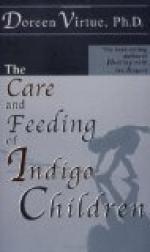What is the principal reason for weaning earlier?
The most important one is that the child is not thriving—not gaining in weight and not progressing normally in its development. Serious illness of the mother, or pregnancy, may make weaning necessary.
At what age should the weaning be completed?
Generally at one year. In summer it may sometimes be advisable to nurse an infant a little longer rather than wean in warm weather; but even then the dangers of weaning are much less than those of continuing to nurse, as is so often done, after the milk has become very scanty and poor in quality.
When should a child who is weaned from the breast be taught to drink from the cup, and when to take the bottle?
If weaning is done as early as the eighth or ninth month it is better to give the bottle; if from the tenth to the twelfth month the infant should be taught to drink or be fed with a spoon.
How may some of the difficulties in weaning be overcome?
By feeding every nursing infant once a day or by giving it water regularly from a feeding-bottle. It then becomes accustomed to the bottle. This is a matter of great convenience during the whole period of nursing when the mother or nurse is from necessity away from the child for a few hours; when more feeding is required at weaning time the child does not object.
When should a child be weaned from the bottle?
With children who are not ill, weaning from the bottle should invariably be begun at the end of the first year, and after a child is thirteen or fourteen months old the bottle should not be given except at the night feeding.
Is there any objection to the child’s taking the bottle until it is two or three years old?
There are no advantages and some serious objections. Older children often become so attached to the bottle that only with the greatest difficulty can they be made to give it up. Frequently they will refuse all solid food, and will take nothing except from the bottle so long as it is given, and when finally at three or four years, it is taken away, they will not touch milk during the rest of their childhood. The difficulty is here that children form the “bottle habit.” This habit is troublesome, unnecessary, and should by all means be prevented. An exclusive diet of milk for children of two or three years often results in anaemia and malnutrition.
How should one train a child to do without the bottle?
This is usually very easy if it is begun at one year. The milk should be poured into a tiny glass or cup and little by little the child is taught to drink; at first only a small portion of the food is taken in this way, the balance being given from the bottle; but in the course of a few weeks the average infant learns to drink from a cup without difficulty, and all the food can be so given.




